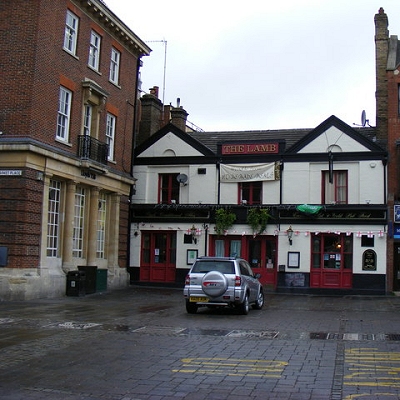
Like us on Facebook
PLACE NAMES


 
|
|
Romford
|

|
|
|
Romford is a large suburban town in northeast London and the administrative headquarters of the London Borough of Havering. It is located 14.1 miles (22.7 km) northeast of Charing Cross and is one of the major metropolitan centres identified in the London Plan. It was historically a market town in the county of Essex and formed the administrative centre of the liberty of Havering, until it was dissolved in 1892. Good road links and the opening of the railway station in 1839 were key to the development of the town and the economic history of Romford is underpinned by a shift from agriculture to light industry and more recently to retail and commerce. As part of the suburban growth of London in the 20th century, Romford significantly expanded and increased in population, becoming a municipal borough in 1937 and has formed part of Greater London since 1965. It now forms one of the largest commercial, retail, entertainment and leisure districts outside central London and has a developed night time economy.
The town centre is about 50 feet (15 m) above sea level on a gravel terrace rising from the River Thames. The north of the town has developed on London Clay and is situated as much as 150 feet (46 m) above sea level. The town centre is for the most part contained within a ring road formed of St Edwards Way, Mercury Gardens, Thurloe Gardens, Oldchurch Road and Waterloo Road. The market place and much of South Street and the High Street are pedestrianised. The railway cuts through the town from east to west on a viaduct, with the bulk of the central Romford area to its north. The River Rom flows through the town in underground channels and joins the Thames after flowing through Hornchurch; elsewhere along its course it is known as the River Beam and forms part of the strategic waterways Blue Ribbon Network. Romford has formed part of the continuously built-up area of London since the 1930s and is contiguous with Rush Green to the west, Collier Row to the north, Gidea Park to the east and Hornchurch to the south east. The Romford post town covers all of the former municipal borough and extends over a much wider area, including parts of Barking and Dagenham and Epping Forest. Climate data for Romford is taken from the nearest weather station at Greenwich, around 10 miles (16.1 km) south west of the marketplace:
|
 Feel free to Email me any additions or corrections Feel free to Email me any additions or corrections
LINKS AVAILABLE TO YOUR SITE
| |





